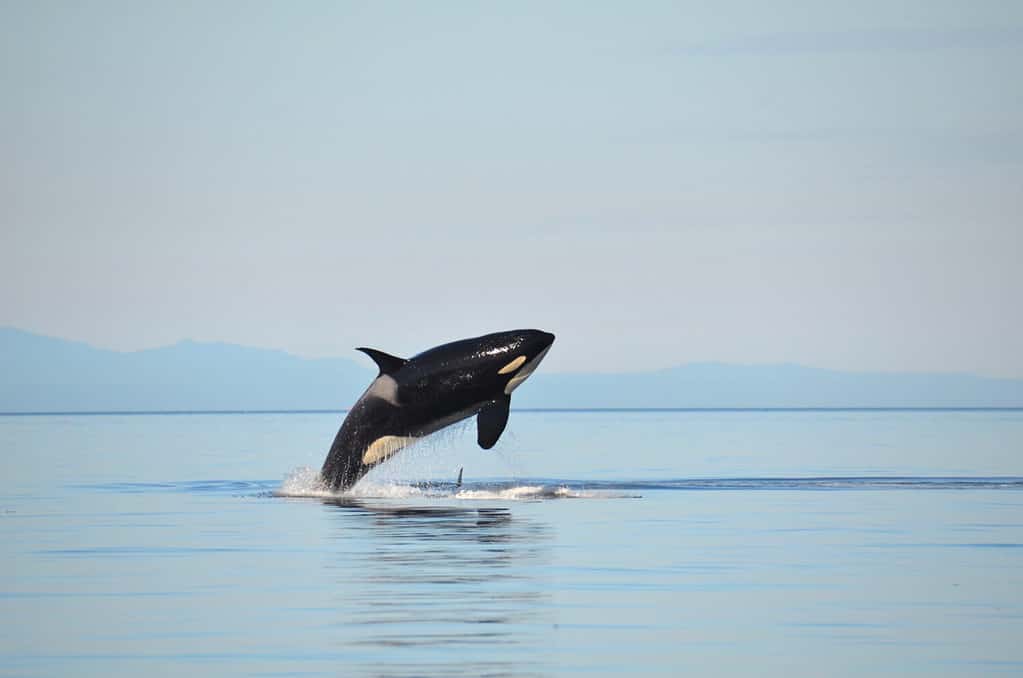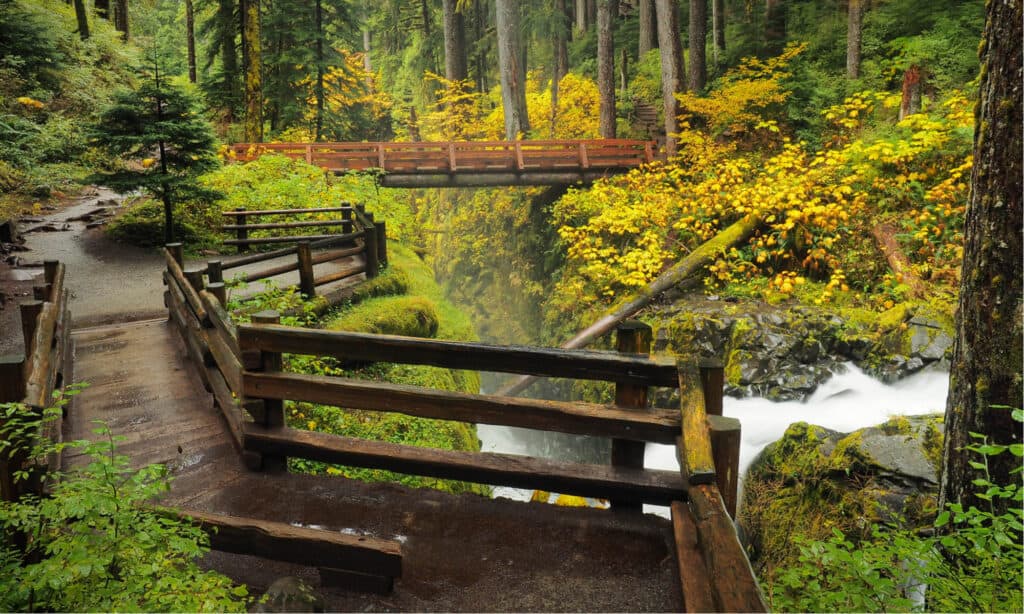Washington is well known for its rainy weather and evergreen forests in the west, but it is also home to warm and arid environments east of the mountains. This article will investigate the hottest place in Washington State and will discuss the geological and geographic factors that influence the state’s climate.
Background
Geography

Washington, the Evergreen State, is in the Pacific Northwest region of the United States.
©Kirk Fisher/iStock via Getty Images
Washington State is in the Pacific Northwest region of the United States. Sitting in the far northwestern corner of the contiguous United States, it shares its northern border with Canada’s British Columbia. To the west, the expansive Pacific Ocean hugs its coastline. Washington is home to the towering Cascade Mountains. This range extends from British Columbia down through the state and into Oregon. These rugged peaks are iconic for their snow-capped majesty and provide the backdrop to many of Washington’s iconic landscapes.
To the east of the Cascades, the topography transforms into a vast, arid plateau, known as the Columbia Plateau. This region features dry, rolling hills and is significantly drier than the western part of the state. The mighty Columbia River, one of the largest rivers in North America, cuts through this plateau, carving deep gorges and creating a crucial waterway for transportation and irrigation. Washington also has numerous other geological wonders, including the Olympic Mountains on the Olympic Peninsula, which are home to lush rainforests and dramatic coastlines, and the Palouse Hills, a picturesque expanse of rolling hills and fertile farmland.
Climate in Washington

There is a maritime climate in the western part of Washington State because it lies on the Pacific Ocean.
©Monika Wieland Shields/Shutterstock.com
Washington State exhibits a wide range of climates across its diverse regions. The western part of the state, including cities like Seattle and Tacoma, experiences a maritime or oceanic climate. This region has mild, wet winters and relatively cool, dry summers. The Pacific Ocean’s moderating influence ensures that temperatures remain fairly moderate year-round, with abundant rainfall. It is an ideal environment for lush forests and a vibrant, green landscape.
In contrast, the eastern part of Washington, particularly east of the Cascade Mountains, falls under a semi-arid or continental climate. Cities like Spokane and Yakima experience hot, dry summers with temperatures often soaring above 90°F (32°C), while winters can be harsh, with cold temperatures and occasional snowfall. This drier climate is conducive to agriculture, and consequently, the region has incredible vineyards, orchards, and wheat fields. The Cascade Mountains create a significant rain shadow, blocking moisture from reaching the eastern side and intensifying the contrast between the state’s two main climate zones.

The Hoh Rainforest in Olympic National Park is an amazing example of a temperate rainforest.
©Jakapong Paoprapat/Shutterstock.com
The Olympic Peninsula in the far northwest boasts a unique temperate rainforest climate, receiving some of the highest annual rainfall totals in the contiguous United States. The result is a lush, moss-covered landscape with towering trees and abundant wildlife. Overall, Washington State’s diverse climates contribute to its rich natural beauty and offer something for everyone. Whether you prefer the temperate, rainy coast, the arid plains of the Columbia Plateau, or the alpine wonders of the Cascades, Washington is an incredible escape into nature.
Hottest Place in Washington
Hottest Temperature on Record
The hottest place in Washington is Hanford, Washington. On June 29th, 2021, an all-time high temperature of 120 degrees Fahrenheit was recorded at the Hanford Nuclear Reservation. The previous record was 118 degrees Fahrenheit in Wahluke, Washington on July 24th, 1928, and in Ice Harbor Dam, Washington, on August 5th, 1961.
Hanford, Washington
Hanford is located in southeastern Washington State, situated along the eastern bank of the Columbia River. It is part of the larger Tri-Cities area, which includes Richland, Kennewick, and Pasco. This region lies in the rain shadow of the Cascade Mountains. The rain shadow results in a semi-arid climate characterized by hot, dry summers and cold winters. With ample sunshine and low precipitation, this climate is ideal for agriculture and viticulture. As a result, the Tri-Cities area is famous for its vineyards and wineries.

The Hanford Site was part of the Manhattan Project in World War II.
©TobinFricke/Wikimedia Commons – License
Hanford is notable because of the Hanford Site, a sprawling nuclear reservation established during World War II as part of the Manhattan Project. The site played a pivotal role in the development of atomic weapons and plutonium production. It was chosen for its remote location and proximity to the Columbia River, which provided an abundant water supply necessary for cooling reactors. The Hanford Site was instrumental in producing the plutonium used in the atomic bomb dropped on Nagasaki in 1945. After the war, the site continued to be a key location for nuclear research and production during the Cold War. It was also the site of numerous nuclear reactors and processing facilities. Today, efforts focus on cleanup and environmental restoration, as the site’s nuclear production activities have ceased. The legacy of Hanford’s nuclear history is complex, with ongoing challenges related to radioactive waste management and environmental remediation.
The photo featured at the top of this post is © Danita Delimont/Shutterstock.com
Thank you for reading! Have some feedback for us? Contact the AZ Animals editorial team.






